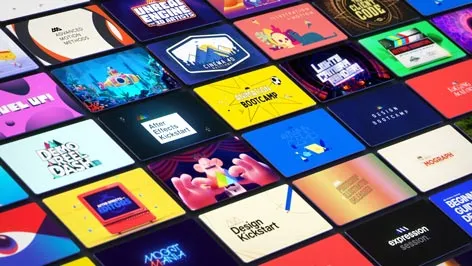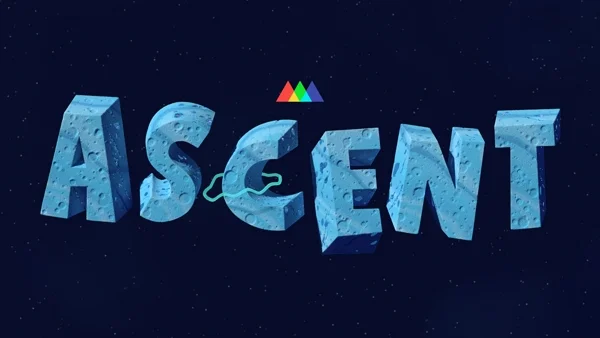What is rigging in 3D?
3D rigging is a process in which you set up assets so they can be animated. Rigs can be made up of a variety of things, from simple controllers, blend shapes, and deformers to full joint skeleton rigs. Regardless the setup, a rig is a chain of object relationships. Rigging is an essential step in the 3D animation process, as it allows animators to manipulate the 3D model and make it move in whatever way you want it to.

What is the process of 3D character rigging?
The process of 3D rigging involves creating a skeleton or "rig" for the 3D model, which is made up of interconnected joints and bones. The rig is then used to control the movement of the 3D model, much like how a real skeleton allows us to move our bodies. The rig is typically created using specialized software, such as Cinema 4D or Blender, and can be as simple or complex as necessary for the project at hand as a rig is simply creating a setup that allows you to animate an object or character easily.
The process of 3D rigging typically involves the following steps:
- Create the 3D model: In Cinema 4D, this can be done using a variety of modeling tools and techniques, such as spline modeling, polygon modeling, or sculpting. You should design your model in a way to ensure that it will be easy to rig and animate. For example the more dense your mesh, the harder it will be to rig and animate your object. On the other hand, if you have a very low poly object, it can be difficult to achieve nice deformations.
- Design the rig: This typically involves creating a skeleton or "rig" made up of interconnected joints and bones but rigs can also include using Deformers, Blendshapes and hierarchy. In Cinema 4D, you can use the "Character Object" to create a hierarchy of joints and bones for you automatically. No matter what you do to create a rig, it should be designed to match the movement and deformation of the 3D model.
- Set up the control system: After the rig has been created, the next step is to set up the control system that will be used to manipulate the rig and animate the 3D model. This typically involves adding user-interface elements, such as selectable nulls, sliders and buttons, to the rig, which can be used to move the joints and bones and create specific poses and movements.

- Weight the model: In order for the rig to properly control the movement and deformation of the 3D model, it is necessary to carefully "weight" the model. In Cinema 4D, this can be done using the "Weight Tool," which allows you to assign each bone in the rig to a section of your geometry, determining how much influence each bone has on the deformation of each part of the model.
- Test and refine the rig: Once the rig has been set up and the model has been weighted, the next step is to test the rig and ensure that it is working properly. This typically involves creating a series of test animations to see how the rig and model behave, and making any necessary adjustments to the rig to improve its performance.
- Use the rig to animate the model: Once the rig is working properly, it can be used to animate the 3D model. This typically involves using the control system to manipulate the rig and record keyframes for the type of animation you require.

How do you animate a rig?
Once the rig has been created, the animator can then begin to animate the 3D model. This is typically done using a process called "forward kinematics," in which the animator moves the joints and bones of the rig to create a specific pose or movement. The alternative to forward kinematics is “inverse kinematics” which is a technique used to automatically calculate the movements of the joints and bones in a rig to achieve a specific pose or movement for the 3D model. The 3D model will then automatically move and deform to match the movement of the rig, creating a realistic and believable animation.

What are the uses for rigging?
In addition to controlling the movement of the 3D model, 3D rigging can also be used to add other elements to the animation, such as facial expressions or clothing. This is done by adding additional controls to the rig, which can be used to manipulate specific areas of the 3D model. For example, an animator might add controls for the eyes, mouth, and eyebrows to the rig to create a wide range of facial expressions.
One of the key advantages of 3D rigging is that it allows animators to create complex and realistic animations quickly and easily. With a well-designed rig, an animator can create a wide range of movements and poses with just a few simple actions, saving a great deal of time and effort. This is particularly useful for creating animations with many characters, as it allows the animator to quickly create and manipulate multiple rigs at once.
What’s the best way to learn 3D rigging?
Because each character and object you can rig can be it’s own little puzzle, it’s important to learn the foundational concepts of 3D rigging. No matter the software, the process of rigging is fairly similar. There are many tutorials and videos on the topic but it is important to learn from experienced animators and riggers like the instructors at School of Motion so you’re getting the correct information.
In the end, the absolute best way to learn 3D rigging is simply to get started and try to rig on your own. Start by creating simple rigs and experimenting with different techniques and controls. As you gain experience and confidence, you can gradually increase the complexity of your rigs and animations. Remember that rigs can be as simple or as complex as is required for your task at hand. Don't be afraid to jump in and try to rig your own objects, make mistakes and most importantly learn from them - this is an essential part of the learning process!



Practice with this Free Cinema 4D Character Rig!
Do you really want to learn Cinema 4D the right way?
I hope you've learned a lot so far, and if you really wanna really learn Cinema 4D? Check out Cinema 4D Basecamp, part of the School of Motion core curriculum. And if you're already comfy with Cinema 4D and want to take your 3D skills to the next level, check out Cinema 4D Ascent which will teach you the advanced 3D techniques (like rigging!) that will make your work stand out.
In Cinema 4D Ascent, you'll learn to master marketable 3D concepts in Cinema 4D from Maxon Certified Trainer, EJ Hassenfratz. Over the course of 12 weeks, this class will teach you the fundamental 3D concepts you need to know to create beautiful renders and tackle any task a studio or client might throw at you.





